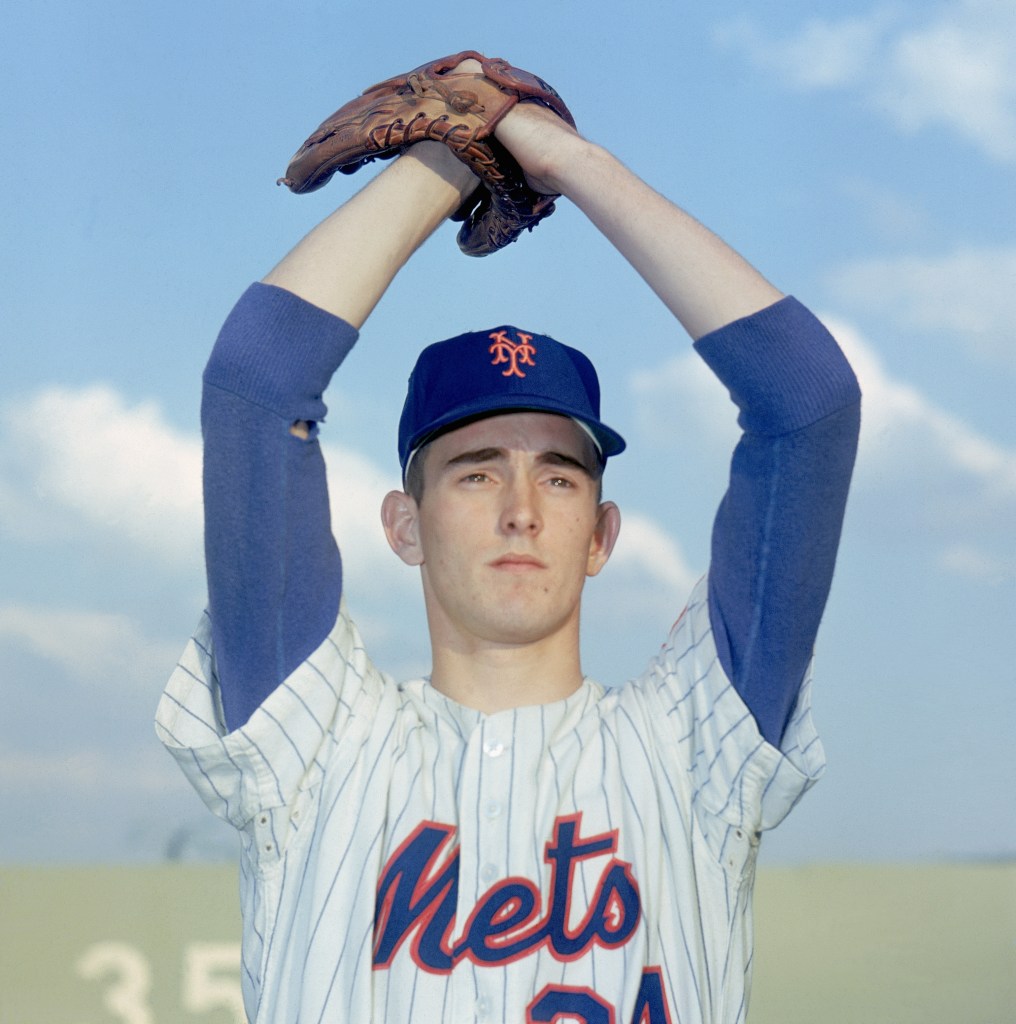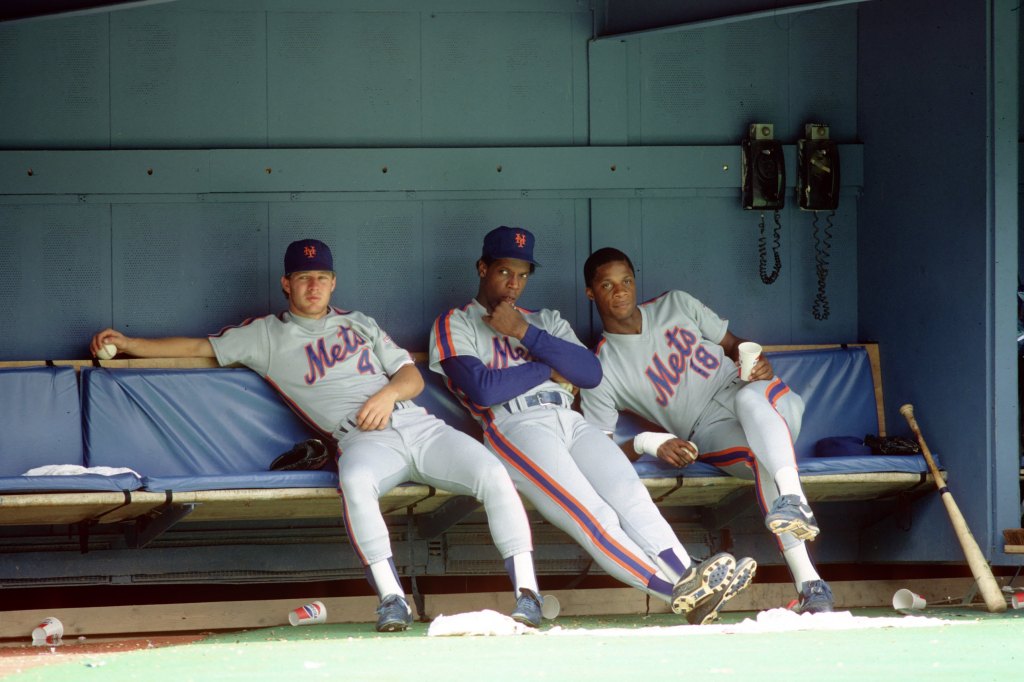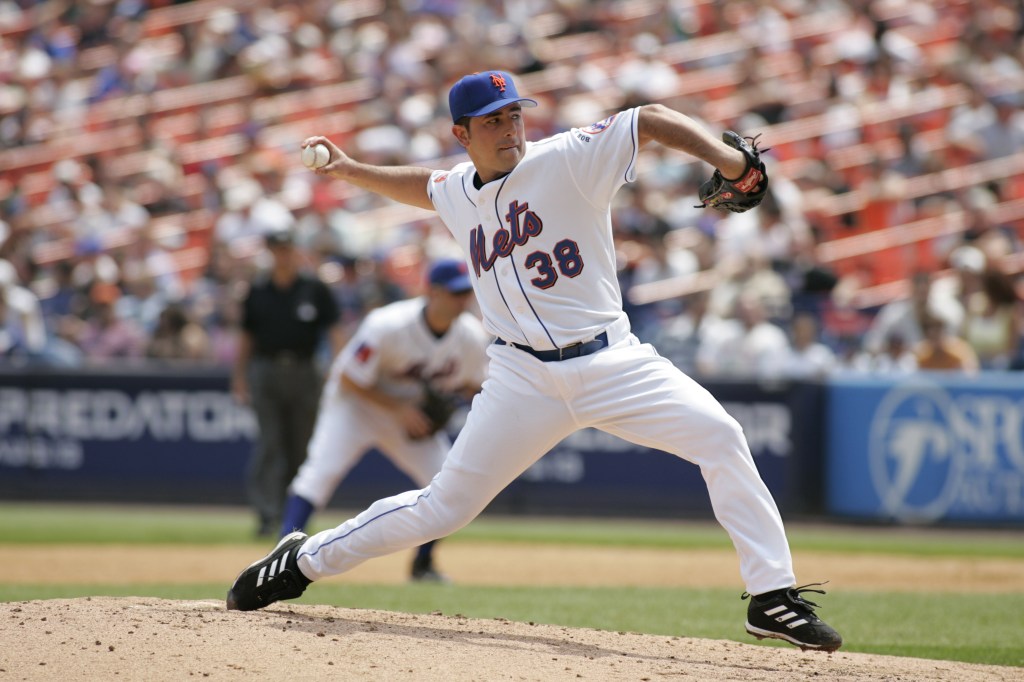The Mets’ dealing is in full swing ahead of this year’s trade deadline.
Once thought to be legitimate contenders with their record $348 million payroll, the Amazins’ are punting this season after trading away future Hall of Famer Max Scherzer and stud closer David Robertson for prospects.
As the team gets ready to potentially deal away more expiring contracts, likely in the form of Tommy Pham and Mark Canha, it’s a good time to look back on all that’s gone wrong with Mets trades in the past.
It’s never easy to immediately grade a deal since careers can shift and slam-dunk trades can turn into nightmares for even the most prudent teams.
But with the gift of hindsight, we can now judge the fates of all the deals the Mets have ever made.
Here are the eight worst Mets’ trades of all time.
Trading Away a Legend: Nolan Ryan to the Angels
It’s not very often that you get the chance to roster a 24-year-old future Hall of Famer.
Unfortunately for the Mets, they just didn’t know it at the time.
On Dec. 10, 1971, the Mets dealt Nolan Ryan and three prospects to the California Angels for six-time All-Star shortstop Jim Fregosi, who looked like he could be the Mets’ answer at third base.
Ryan, who had helped the Mets capture the 1969 World Series while mostly operating in a bullpen role, had control issues that worried the team — he totaled 137 strikeouts and 116 walks in 152 innings the season before he was traded.
The deal could not have ended in a more disastrous fashion.
Ryan went on to become one of baseball’s greatest pitchers and authored a legendary career that includes the most strikeouts in MLB history, 324 wins and three top-three finishes in Cy Young voting.
Fregosi instantly flamed out with the Mets, only lasting one and a half seasons with the team and hitting just five homers.
“You always hate to give up on an arm like Ryan’s,” Mets manager Gil Hodges told the New York Times after the trade. “He could put things together overnight, but he hasn’t done it for us and the Angels wanted him. I would not hesitate making a trade for somebody who might help us right now, and Fregosi is such a guy.”
Amos Otis to the Royals
As a 22-year-old, it didn’t look like Amos Otis would have much of a future with the Mets.
He was a backup outfielder for the 1969 championship team, but it’s not like his contributions carried the squad — Otis had just a 13 OPS+ (100 is league average) during that season.
The Mets shipped him off to Kansas City for a more experienced bat, dealing for veteran infielder Joe Foy.
What would Otis do with the Royals?
The young outfielder blossomed into a star, totaling five All-Star appearances and legitimate MVP consideration over a fruitful career with the Royals, highlighted by an AL pennant in 1980.
Foy, meanwhile, lasted just one season in Queens, hitting .236 with six homers in a mostly unremarkable year.
Otis totaled 45 WAR over 13 seasons with the Royals, while Foy ended up with just 1.9 WAR with the Mets.
Midnight Massacre: The Tom Seaver Trade
Three Cy Youngs. One championship. The adoration of every New York sports fan.
Tom Seaver had ascended to legend status over his first 10 and a half years in Queens, but the Mets tried to remove emotions from the equation when they traded away The Franchise on June 15, 1977.
The Mets traded the all-time great to the Reds for four players: Pat Zachry, Doug Flynn, Steve Henderson, and Dan Norman, who combined to contribute some valuable seasons for the Mets but could not equal the legendary status of Seaver.
The trade was largely driven by Seaver himself, who said in 2007 he requested a trade after Dick Young’s stories in the New York Daily News about his wife infuriated him so much he couldn’t take it anymore.
Seaver finished the 1977 season in Cincinnati with his trademark brilliance, tossing 165 1/3 innings with a 2.34 ERA.
Seaver tossed 1,085 innings with a 3.18 ERA and compiled 18.4 Baseball Reference WAR in his six years with the Reds as the Mets withered away as a National League afterthought.
Zachry had one All-Star year, Flynn was horrendous, Norman played just five big league seasons and Henderson put together four solid seasons before he left for the Chicago Cubs.
The foursome combined for just 12.3 WAR over their entire Mets’ tenures — entirely carried by Zachry and Henderson.
A Pointless Center fielder Swap: The Lenny Dykstra Deal
Next on a long list of players to enjoy their greatest years after taking off the Mets’ uniform: Lenny Dykstra.
The Mets dealt Dykstra, along with right-handed reliever Roger McDowell, to the Phillies in 1989 for a 28-year-old outfielder in Juan Samuel.
Dykstra had been a solid center fielder for the Mets in the four and a half seasons prior and a part of the 1986 championship team, slashing .278/.350/.413 with 30 homers for the Amazins’.
He went on to star with the Phillies, earning two All-Star appearances and helping power the team to an NL pennant in 1993.
Samuel, a speedy outfielder, put together an impressive big league resume but was just an afterthought for the Mets, leaving for the Los Angeles Dodgers after he hit posted a .599 OPS and stole 31 bases in a half-season in Queens.
McDowell took on the closer role in Philadelphia and fashioned a respectable career as a reliever.
It’s clear Dykstra hasn’t forgotten about the trade – in 2021, he poked fun at the Mets’ blunder of acquiring Samuel, writing: “On this day, 32 years ago, the #Mets acquired their center fielder of the future!”
Jeff Kent and Carlos Baerga Trade Places
All too often, the Mets have watched as another franchise player slips through their grasp — and the same can be said in the deal that sent away Jeff Kent.
As their crosstown rivals kicked off a dynasty, the 1996 Mets were a mediocre ballclub that was looking to bolster its chances for years to come at the trade deadline.
But their goals led them to underestimate a talent that was right under their noses: the Mets traded Kent and infielder Jose Vizcaino to Cleveland for Carlos Baerga and Alvaro Espinoza, hinging their hopes for success with the trade on Baerga’s development.
Kent’s career began to take off once he was dealt out of Queens.
He finished off a solid 1996 campaign with Cleveland, then enjoyed a career peak in his early 30s in San Francisco. He slammed175 home runs with a .903 OPS over his six years with the Giants, cementing his place as one of the best offensive second basemen ever.
Baerga, meanwhile, floundered with the Mets, tallying a .676 OPS in three years and becoming a forgettable chapter in the team’s history.
Vizcaino and Espinoza each played just one half-season with the Mets.
A World (Series)-Class Mishap
Every mistake at the deadline counts, but when you make the World Series those gambles loom larger.
In 2000, the Mets’ starting shortstop, Rey Ordonez, broke his arm in late May, creating an absence of talent at the position.
The Amazins’ tried to plug in backup Melvin Mora, but ultimately decided his .740 OPS wasn’t cutting it and they needed to acquire a star if they wanted to furnish their championship hopes.
The only problem: the star they chose wasn’t a star.
The Mets traded for Mike Bordick, a shortstop having a career year with the Baltimore Orioles, only for the career mediocre hitter to become exactly that — a mediocre hitter.
Bordick, who got his only All-Star selection in 2000, had a .831 OPS with Baltimore, but tumbled to a .685 mark once he got to Queens.
No postseason heroics would make up for his play either: he hit 167, .077 and .125 in the Division Series, Championship Series and World Series, respectively.
Mora, meanwhile, must have liked Camden Yards – He posted a .793 OPS over 10 years in Baltimore and earned two All-Star appearances, becoming quite the valuable infielder for the Orioles.
The Mets, who lost the World Series that year to the Yankees, also traded pitcher Leslie Brea, backup outfielder Mike Kinkade and minor leaguer Pat Gorman for Bordick.
No Relief After All
When the Mets dealt Jason Isringhausen to the Oakland A’s for fellow reliever Billy Taylor in 1999, they thought adding a veteran arm would work out quite well — but that couldn’t have been further from the truth.
Isringhausen, who had a 4.59 ERA for the Mets over five years and 380 innings, would become a lockdown reliever in Oakland and eventually St. Louis following his departure from Queens.
The 6-foot-3 righty, 26 at the time, was lights out for the rest of the 1999 season with the A’s and an All-Star the next year. He put together his best campaign in 2004 with the Cardinals when he saved 47 games.
For Taylor, meanwhile, his career heyday was far in the rearview mirror by the time he put on the orange and blue when he was 37.
The reliever had an 8.10 ERA for the Mets after his acquisition and lasted just 18 games in Flushing.
Scott Kazmir to the Rays for Victor Zambrano
Sometimes you just have to go for it.
This was not one of those times.
The Mets stood at 49-53 on July 30, 2004, but that didn’t stop them from executing a furious day of trades.
First, the Mets acquired future MVP third baseman Jose Bautista in a deal with Kansas City, then promptly shipped off the young slugger for hard-throwing righty Kris Benson.
The real disaster came when the Amazins’ decided to cut bait on their best lefty pitching prospect, dealing Scott Kazmir to the Tampa Bay Rays for Victor Zambrano, a 29-year-old righty who had flashed a lot of potential in Tampa Bay.
Zambrano finished his stint in Queens as a disappointment, tossing 201 2/3 innings with 4.42 ERA and largely becoming an afterthought.
Kazmir, meanwhile, was brilliant with Tampa Bay, as many Rays’ trade targets often are.
The lefty developed into an ace with the Rays, earning two All-Star nominees over six years and posting a 2007 season in which he tossed 206 2/3 innings for a 3.48 ERA, essentially besting Zambrano’s entire career in Queens with just one campaign.





















